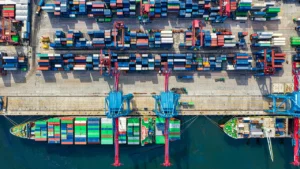Table of Contents
Introduction The Sustainable Development Goals (SDGs) are a set of 17 global objectives established by the United Nations in 2015, aimed at addressing the world’s most pressing challenges by 2030. These goals encompass a broad range of social, economic, and environmental issues, providing a comprehensive framework for sustainable development. This glossary entry explores the Why, How, and What of the SDGs, highlighting their significance and implementation.
Why: The purpose of the SDGs
The primary purpose of the SDGs is to create a sustainable and equitable future for all. Key motivations include:
- Eradicating Poverty: Ensuring that all people have access to basic needs such as food, water, and shelter.
- Protecting the Planet: Addressing climate change, preserving natural resources, and promoting environmental sustainability.
- Promoting Peace and Prosperity: Fostering inclusive societies, reducing inequalities, and ensuring economic growth.
How: The mechanism of the SDGs
The SDGs are implemented through a combination of international cooperation, national policies, and local initiatives. Key strategies include:
- Policy Integration: Incorporating the SDGs into national development plans and policies to ensure alignment with global objectives.
- Partnerships: Collaborating with governments, businesses, civil society, and international organizations to leverage resources and expertise.
- Monitoring and Reporting: Establishing mechanisms to track progress, measure outcomes, and ensure accountability.
- Capacity Building: Strengthening institutions and providing the necessary tools and knowledge to implement sustainable practices.
What: The applications of the SDGs
The SDGs cover a wide range of areas, each with specific targets and indicators. Examples include:
- No Poverty (Goal 1): Implementing social protection systems and ensuring equal access to economic resources.
- Quality Education (Goal 4): Providing inclusive and equitable quality education and promoting lifelong learning opportunities.
- Climate Action (Goal 13): Taking urgent action to combat climate change and its impacts through mitigation and adaptation strategies.
- Life Below Water (Goal 14): Conserving and sustainably using the oceans, seas, and marine resources for sustainable development.
Wrap-up
The Sustainable Development Goals (SDGs) are a global blueprint for achieving a sustainable and equitable future by 2030. Their purpose is to create a sustainable and equitable future by addressing poverty, protecting the planet, and promoting peace and prosperity. The SDGs are implemented through policy integration, partnerships, monitoring, and capacity building. Covering a wide range of areas, the SDGs provide a comprehensive framework for addressing the world’s most pressing challenges and ensuring sustainable development for all.



